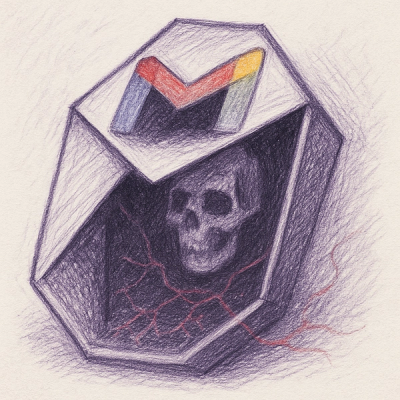
Research
NPM targeted by malware campaign mimicking familiar library names
Socket uncovered npm malware campaign mimicking popular Node.js libraries and packages from other ecosystems; packages steal data and execute remote code.
@pixano/graphics-2d
Advanced tools
Set of web components for image and video annotations.
npm install @pixano/graphics-2d
Include with a module bundler like rollup or webpack using ES6 modules:
// import all 2d elements
import "@pixano/graphics-2d";
// or a specific element
import "@pixano/graphics-2d/lib/pxn-rectangle";
The UMD build is also available on unpkg:
<script src="https://unpkg.com/@pixano/graphics-2d/dist/graphics-2d.min.js"></script>
Example usage:
import { css, html, LitElement} from 'lit-element';
import '@pixano/graphics-2d';
const colors = [
'blue', 'green', 'purple',
'yellow', 'pink', 'orange', 'tan'
];
class MyDemoRectangle extends LitElement {
onCreate(evt) {
// listening to the create event dispatched
// by the element to assign a nice color to
// the new rectangle.
const newObj = evt.detail;
newObj.color = colors[this.element.shapes.size % colors.length];
this.element.mode = 'edit';
}
get element() {
// Utility getter of the element
return this.shadowRoot.querySelector('pxn-rectangle');
}
render() {
// Render the template with the rectangle element
// enriched with some buttons to interact with it.
return html`
<pxn-rectangle image="image.jpg" @create=${this.onCreate}></pxn-rectangle>
<div>
<button @click=${() => this.element.mode = 'create'}>Add</button>
<button @click=${() => this.element.zoomIn()}>+</button>
<button @click=${() => this.element.zoomOut()}>-</button>
</div>`;
}
}
customElements.define('my-demo-rectangle', MyDemoRectangle);
| Name | Type | Default | Description |
|---|---|---|---|
image | `string | null` | null |
input | `string | string[]` | null |
hideLabels | boolean | false | When true, hides the label layer. |
color | string | #f3f3f5 | Background color |
zoom | number | 0.95(readonly) | Zoom value |
Note: pxn-canvas-2d inherits from pxn-canvas.
| Name | Type | Default | Description |
|---|---|---|---|
mode | InteractionMode* | edit | Sets the canvas interaction mode. Use none for no interactions at all. |
shapes | ShapeData**[] | [] | Sets the canvas shapes to be displayed. |
selectedShapeIds | string[] | [] | List of selected shape ids |
enableOutsideDrawing | boolean | false | Enable 2d shape drawing outside of image bounds |
*InteractionMode depends on the element:
// pxn-rectangle | pxn-polygon | pxn-keypoints
type InteractiveMode = 'edit' | 'create' | 'none';
// pxn-segmentation
type InteractiveMode = 'edit' | 'create' | 'create-brush' | 'none';
// pxn-smart-rectangle
type InteractiveMode = 'edit' | 'create' | 'smart-create' | 'none';
// pxn-smart-segmentation
type InteractiveMode = 'edit' | 'create' | 'create-brush' | 'smart-create' | 'none';
**The 2d shapes have the following format:
// 2d shape
interface ShapeData {
// unique id
id: string;
// geometry of the shape
geometry: Geometry;
// optional color to be displayed
color?: string;
// category string for smart elements
// that automatically assign category
category?: string;
}
// 2d shape generic geometry format
interface Geometry {
// flatten array of geometry normalized vertices
// e.g. rectangle: [x_left, y_top, x_right, y_bottom]
// e.g. polygon: [x1, y1, x2, y2, ...]
// e.g. multi_polygon: []
vertices: number[];
// edges: [[0,1],[0,2]...]
edges?: [number, number][];
// edges: [true,false...]
visibles?: boolean[];
// geometry type: rectangle | polygon | multi_polygon
type: GeometryType;
// dimension
dim?: number;
// in case of multi polygon
// array of array of vertices
// e.g. multi_polygon: [[x1, y1, x2, y2...], [x'1, y'1, ...]]
mvertices?: number[][];
}
type GeometryType = 'rectangle' | 'polygon' | 'multi_polygon';
Note: pxn-rectangle inherits from pxn-canvas-2d so all properties in pxn-canvas-2d will be available on pxn-rectangle.
Note: pxn-polygon inherits from pxn-canvas-2d so all properties in pxn-canvas-2d will be available on pxn-polygon.
| Name | Type | Default | Description |
|---|---|---|---|
isOpenedPolygon | Boolean | false | Whether to open polygon into polylines |
Note: pxn-segmentation inherits from pxn-canvas so all properties in pxn-canvas will be available on pxn-segmentation.
| Name | Type | Default | Description |
|---|---|---|---|
mask | `ImageData* | null` | null |
mode | `select | update | create |
maskVisuMode | `SEMANTIC | INSTANCE` | SEMANTIC |
showroi | boolean | false | Show ROI helper when creating a new mask instance. |
*The mask is stored as an ImageData:
interface ImageData {
// Data contains the ImageData object's pixel data. it is stored as a one-dimensional array in the RGBA order, with integer values between 0 and 255 (inclusive).
// Here [R, G, B, A] correspond to:
// R: instance index from 1 to 255 (0 is for background or semantic classes)
// G: additional instance index if #instances > 255 (often equals to 0)
// B: class index
// E.g.: Person class corresponds to idx 2 / Car of idx 3
// All the pixels of a new person A will have a [1, 0, 2] value
// All the pixels of a new car B will have a [2, 0, 3] value
// All the pixels of a new person C will have a [3, 0, 2] value
data: Uint8ClampedArray;
height: number;
width: number;
}
It can be read using the following python script:
import json
import base64
import cv2
import numpy as np
def readb64(uri):
encoded_data = uri.split(',')[1]
nparr = np.fromstring(base64.b64decode(encoded_data), np.uint8)
img = cv2.imdecode(nparr, cv2.IMREAD_UNCHANGED)
return img
def writeb64(img):
retval, buffer = cv2.imencode('.png', img)
pic_str = base64.b64encode(buffer)
pic_str = pic_str.decode()
return pic_str
# assuming you stored the mask in a json file of the following structure
# { annotations: [{mask: "data:image/png;base64,iVBORw0KGgoAA..."}]}
with open(filename, 'r') as f:
annotations = json.load(f)["annotations"]
for ann in annotations:
mask = readb64(ann["mask"])
print(mask.shape)
# should be (height,width,3)
# corresponding to [id1, id2, classIdx]
# id1 and id2 are zeros in case of semantic segmentation
Note: pxn-smart-rectangle inherits from pxn-rectangle so all properties in pxn-rectangle will be available on pxn-smart-rectangle. Its additional interaction mode consists in clicking on a pixel in the image cropping its context of given size and automatically generate the best fitted box in the area. Detector used is SSD mobilenet trained on MsCOCO. Generated boxes are assigned MsCOCO's categories.
| Name | Type | Default | Description |
|---|---|---|---|
scale | number | 1 | Scaling factor from the base ROI used by the detector (256) to crop the image from |
Note: pxn-keypoints inherits from pxn-canvas-2d so all properties in pxn-canvas-2d will be available on pxn-keypoints. Additional properties are available:
| Name | Type | Default | Description |
|---|---|---|---|
graphType | GraphSettings | defaultSkeleton | Skeleton structure |
export interface IGraphSettings {
radius: number;
// Set list of node colors or empty if all take the shape color
nodeColors: number[];
// Set one color for all edges or same as nodes
edgeColorType: "default" | "node";
// Set skeleton #keypoints with their names
vertexNames: string[];
// Set skeleton links between its vertices
edges: [number, number][];
// Display node names during creation and edition
showVertexName: boolean;
}
const defaultSkeletonSettings = {
radius: 4,
nodeColors: [
0Xe6194b, 0X3cb44b, 0Xffe119, 0X4363d8, 0Xf58231, 0X911eb4,
0X46f0f0, 0Xf032e6, 0Xbcf60c, 0Xfabebe, 0X008080, 0Xe6beff,
0X9a6324, 0Xfffac8, 0X800000, 0Xaaffc3, 0X808000, 0Xffd8b1,
0X000075, 0X808080, 0Xffffff, 0X000000
],
edgeColorType: "node",
edges: [[0,1], [0,2]],
vertexNames: ['header', 'RFoot', 'LFoot'],
showVertexName: true
};
| Name | Description |
|---|---|
zoomIn() => void | Zoom in |
zoomOut() => void | Zoom out |
fullScreen() => void | Fullscreen |
Note: pxn-canvas-2d inherits from pxn-canvas.
Note: pxn-rectangle inherits from pxn-canvas-2d so all methods in pxn-canvas-2d will be available on pxn-rectangle.
Note: pxn-polygon inherits from pxn-canvas-2d so all methods in pxn-canvas-2d will be available on pxn-polygon.
| Name | Description |
|---|---|
merge() => void | Merge selected shapes |
split() => void | Split selected shape |
Note: pxn-segmentation inherits from pxn-canvas so all methods in pxn-canvas will be available on pxn-segmentation.
| Name | Description |
|---|---|
setOpacity() => void | Set mask opacity [0,1] |
filterLittle(numPixels: number = 10) => void | Filter isolated regions containing less than given number of pixels |
Note: pxn-smart-rectangle inherits from pxn-rectangle so all methods in pxn-rectangle will be available on pxn-smart-rectangle.
| Name | Description |
|---|---|
roiDown() => void | Scale up ROI |
roiUp() => void | Scale down ROI |
None
| Event Name | Detail | Description |
|---|---|---|
create | ShapeDataDetail | Fired when a shape has been created. |
update | ShapeDataIdxDetail | Fired when a shapes update has been made. |
delete | ShapeDataIdxDetail | Fired when shapes are deleted. Detail is the list of the deleted shape ids. |
selection | ShapeDatasDetail | Fired when shapes are selected. |
mode | ModeDetail | Fired when user interaction mode changed |
interface ShapeDataDetail {
detail: ShapeData;
}
interface ShapeDatasDetail {
detail: ShapeData[];
}
interface ShapeDataIdxDetail {
detail: string[];
}
interface ModeDetail {
detail: InteractionMode;
}
| Key | Description |
|---|---|
m | Darken image |
p | Brighten image |
Ctrl+C | Copy in clipboard currently selected shapes/instance |
Ctrl+V | Create new shapes/instance (with new ids) from the clipboard content |
Ctrl+Space | Toggle labels (hide / show) |
Tab | Loop throught the scene shapes/instances |
| Key | Description |
|---|---|
Escape | Unselect shapes |
Delete | Delete selected shapes |
| Key | Description |
|---|---|
Escape | Unselect instance |
Delete | Delete selected instance |
FAQs
Pixano graphics 2d module
The npm package @pixano/graphics-2d receives a total of 10 weekly downloads. As such, @pixano/graphics-2d popularity was classified as not popular.
We found that @pixano/graphics-2d demonstrated a not healthy version release cadence and project activity because the last version was released a year ago. It has 1 open source maintainer collaborating on the project.
Did you know?

Socket for GitHub automatically highlights issues in each pull request and monitors the health of all your open source dependencies. Discover the contents of your packages and block harmful activity before you install or update your dependencies.

Research
Socket uncovered npm malware campaign mimicking popular Node.js libraries and packages from other ecosystems; packages steal data and execute remote code.

Research
Socket's research uncovers three dangerous Go modules that contain obfuscated disk-wiping malware, threatening complete data loss.

Research
Socket uncovers malicious packages on PyPI using Gmail's SMTP protocol for command and control (C2) to exfiltrate data and execute commands.